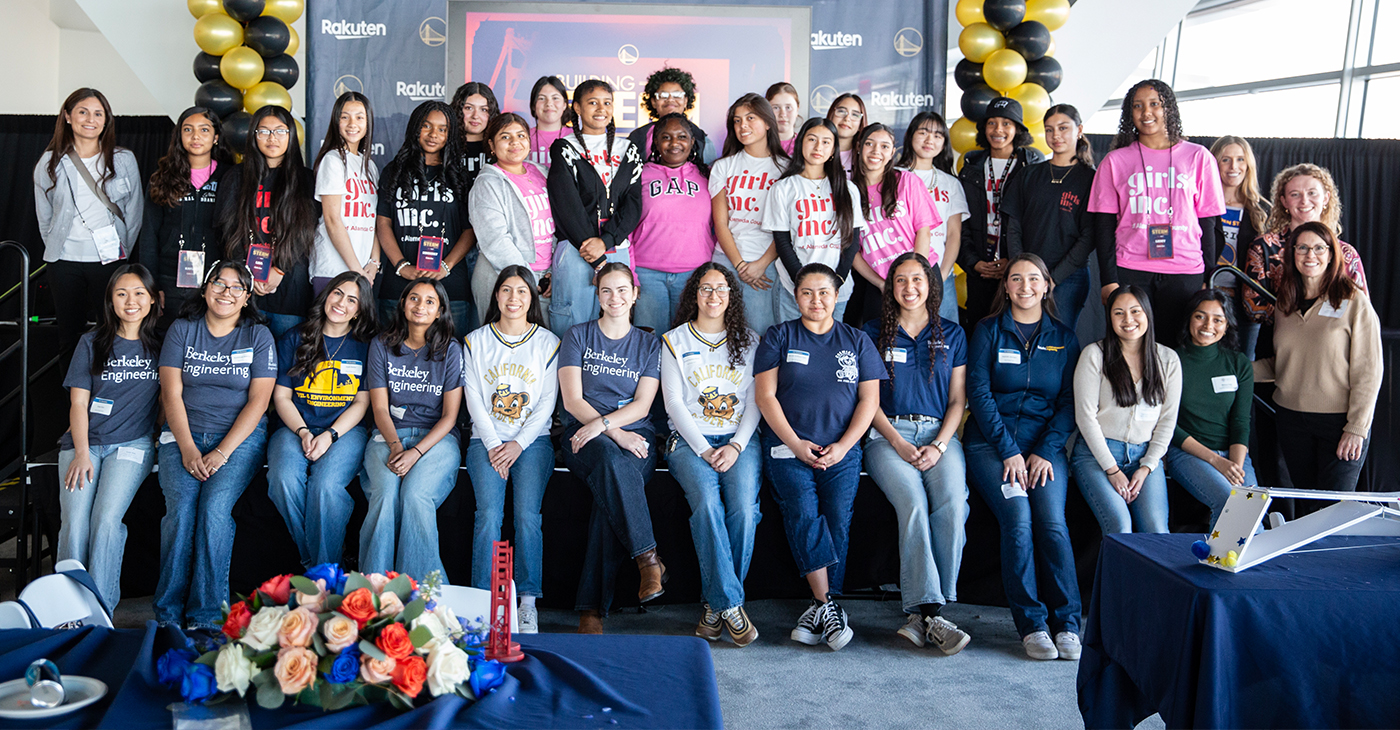Berkeley
Z Gallerie Accused of Racist Hiring Practices
Four Black Women File Lawsuit Against Furniture Chain
Z Gallerie, the luxury home furnishing chain store, calls itself the style authority for the fashion-forward home. But when it comes to its Black employees working at its Berkeley store, they call it a work environment that’s home to discrimination and retaliation against them , if they complain or bring awareness of mistreatment to management.
In a lawsuit filed against Z Gallerie by four African-American women who were former employees at they store, they all claim they experienced racial discrimination in the form of lack of promotion, disparate treatment and unlawful termination.
“Z Gallerie put them in a Catch-22 situation, putting the women in a situation where they were forced to resign or get terminated,”said Waukeen McCoy with the McCoy Law Firm that’s representing the plaintiffs. “I have seen race discrimination cases before, but this is one of the more extensive ones.”
Tanisha Alston, Camille Goode, Shelita Harper and Mikala Jackson are the plaintiffs suing the retail giant. They all worked at the Berkeley Z Gallerie store, located at 1700 4th St.
The lawsuit states that job opportunities at the store were not advertised to the Black plaintiffs and other people from outside the store were hired, even though the Black plaintiffs were interested in the promotions. Or the jobs from Z gallerie were advertised, but the Black plaintiffs, with more experience on the job and in sales, weren’t allowed to interview for the openings.
In one incident, Alston, who was the assistant manager at the store, was working as the acting manager, as the previous manager left the store. Without giving her a chance to apply for the managing position, Z Gallerie hired a store manager who was white. Alston had to eventually teach and train him on the duties of a store manager.
“These Black women, had a wealth of experience in retail and one in particular, was qualified enough to run a store,” continued McCoy “But time after time, they were passed over for promotion, by less qualified white employees.”
In another incident a Black employee was called “ghetto” by a white employee. In another incident Harper, who was hired as a sales associate, was told by a white manager that the Black employee that trained her, would never be a manager at the store. When this Black employee resigned later, two white employees gave each other high-fives, celebrating his resignation, in front of Harper.
The lawsuit details instances when Human Resources for Z Gallerie were notified about the problems at the store by management. Instead of being reprimanded, managers who harassed the black staff were often promoted.
When the plaintiffs felt they were being mistreated and they complained to Human Resources, they said their work hours were cut by the management. The lawsuit also states that the Black plaintiff were being asked by Z Gallerie managers to profile Black customers who came into the store. Making sure that Black patrons at the store didn’t steal and double-checking identificaiton if charges were made with credit cards were some of the tactics used. Charges of racial insensitivity at Z Gallerie are not new. In Dallas, Texas, in March of 2016, a celebrity financial adviser Arnitra Johnson-Hall was at a Z Gallerie store trying to buy a gift card at the store.
Even through the purchase was approved by her credit card, she left the store after a white store manager called the store security hotline on her. She wrote about it on her Facebook page, and the incident went viral prompting a response from Z Gallerie.
Z Gallerie responded by stating that, “discrimination, in any form is not in line with our company culture or values.” Calls to Z Gallerie’s corporate office in Los Angeles were placed, regarding the issues at the Berkeley location. They didn’t respond by press time.

Waukeen McCoy
McCoy said that he tried to get the issues resolved with the corporate offices in Berkeley and the national location in Los Angeles.
“We actually tried to resolve this with Z Gallerie,” continued McCoy. “We were ignored and that’s why we decided to file this lawsuit. Usually a company will respond, but it’s telling they didn’t.”
The lawsuit was filed in the Superiors Court of California in Alameda County. While Z Gallerie is headquartered in Los Angeles, the Berkeley store, is one of the flagship stores on the West Coast. The lawsuit is asking for general damages, as well as special and punitive damages for all the plaintiffs.
Activism
Faces Around the Bay: Author Karen Lewis Took the ‘Detour to Straight Street’
“My life has been a roller-coaster with an unlimited ride wristband! I was raised in Berkeley during the time of Ron Dellums, the Black Panthers, and People’s Park. I was a Hippie kid, my Auntie cut off all our hair so we could wear the natural styles like her and Angela Davis.

By Barbara Fluhrer
I met Karen Lewis on a park bench in Berkeley. She wrote her story on the spot.
“My life has been a roller-coaster with an unlimited ride wristband! I was raised in Berkeley during the time of Ron Dellums, the Black Panthers, and People’s Park. I was a Hippie kid, my Auntie cut off all our hair so we could wear the natural styles like her and Angela Davis.
I got married young, then ended up getting divorced, raising two boys into men. After my divorce, I had a stroke that left me blind and paralyzed. I was homeless, lost in a fog with blurred vision.
Jesus healed me! I now have two beautiful grandkids. At 61, this age and this stage, I am finally free indeed. Our Lord Jesus Christ saved my soul. I now know how to be still. I lay at his feet. I surrender and just rest. My life and every step on my path have already been ordered. So, I have learned in this life…it’s nice to be nice. No stressing, just blessings. Pray for the best and deal with the rest.
Nobody is perfect, so forgive quickly and love easily!”
Lewis’ book “Detour to Straight Street” is available on Amazon.
Activism
Golden State Warriors Program Is Inspiring Next Generation of Female Engineers
Breaking down barriers and biases that deter young girls from pursuing STEAM subjects is essential for creating a level playing field and ensuring equal opportunities for all. By challenging stereotypes and promoting a culture of inclusivity and diversity in STEAM fields, experts believe young girls can be empowered to pursue their interests and aspirations without limitations confidently. Encouraging mentorship, providing access to resources, and celebrating girls’ achievements in STEAM are all crucial steps in creating a supportive environment that fosters success.

By Y’Anad Burrell
The Golden State Warriors and e-commerce giant Rakuten are joining forces to inspire the next generation of female engineers through Building STEAM Futures, part of The City Calls campaign.
Organizers say the initiative is founded on the idea that science, technology, engineering, arts, and mathematics (STEAM) are crucial fields for innovation and progress, and empowering young girls to pursue careers in these areas is more important than ever. Studies consistently show that girls are underrepresented in STEAM fields, resulting in a gender disparity that limits potential and hinders diversity.
Breaking down barriers and biases that deter young girls from pursuing STEAM subjects is essential for creating a level playing field and ensuring equal opportunities for all. By challenging stereotypes and promoting a culture of inclusivity and diversity in STEAM fields, experts believe young girls can be empowered to pursue their interests and aspirations without limitations confidently. Encouraging mentorship, providing access to resources, and celebrating girls’ achievements in STEAM are all crucial steps in creating a supportive environment that fosters success.
On Saturday, March 8, International Women’s Day, the Warriors and Rakuten hosted 20 middle school girls from Girls Inc. of Alameda County at Chase Center’s Above the Rim for a hands-on bridge-building experience. The young girls from Girls, Inc. of Alameda County had an opportunity to design, build and test their own bridge prototypes and learn the fundamentals of bridge construction from the Engineering Alliance and the UC Berkeley Steel Bridge Team.
This STEAM experience for the girls followed the first session in January, where they took a behind-the-scenes tour of the Golden Gate Bridge, learning about its design and construction from industry experts. The City Calls campaign, tipped off with the unveiling the Warriors’ new bridge-themed City Edition jerseys and court design earlier this year.
Activism
Lawsuit Accuses UC Schools of Giving Preference to Black and Hispanic Students
The lawsuit also alleges UC is violating the Equal Protection Clause of the 14th Amendment and Title VI of the Civil Rights Act of 1964, which bars racial discrimination by federally funded institutions. In response, UC stated that race is not a factor in admissions, as per state law, and that student demographic data is collected only for statistical purposes.

By Bo Tefu, California Black Media
A lawsuit filed in federal court accuses the University of California (UC) of racial discrimination in undergraduate admissions, alleging that Black and Latino students are favored over Asian American and white applicants. The lawsuit, filed by the group Students Against Racial Discrimination, claims UC’s admissions policies violate Proposition 209, a state law passed in 1996 that prohibits the consideration of race in public education.
The lawsuit also alleges UC is violating the Equal Protection Clause of the 14th Amendment and Title VI of the Civil Rights Act of 1964, which bars racial discrimination by federally funded institutions.
In response, UC stated that race is not a factor in admissions, as per state law, and that student demographic data is collected only for statistical purposes.
Stett Holbrook, a spokesperson for the UC system, said the entity had not been served with the lawsuit.
“If served, we will vigorously defend our admission practices,” said Holbrook.
“We believe this to be a meritless suit that seeks to distract us from our mission to provide California students with a world-class education,” he said.
The complaint criticizes UC’s use of a “holistic” admissions process, arguing it replaces objective academic criteria with subjective considerations that disadvantage certain racial groups. It cites admission rate disparities at UC Berkeley, noting a decrease in Black student admissions from 13% in 2010 to 10% in 2023, compared to an overall drop from 21% to 12%.
The lawsuit follows the U.S. Supreme Court’s 2023 ruling banning affirmative action in college admissions, which has prompted challenges to race-conscious policies nationwide. The plaintiffs seek a court order preventing UC from collecting racial data in applications and request a federal monitor to oversee admissions decisions.
-

 Activism3 weeks ago
Activism3 weeks agoOakland Post: Week of April 9 – 15, 2025
-

 #NNPA BlackPress4 weeks ago
#NNPA BlackPress4 weeks agoTrump Profits, Black America Pays the Price
-

 Activism2 weeks ago
Activism2 weeks agoOakland Post: Week of April 16 – 22, 2025
-

 Activism1 week ago
Activism1 week agoAI Is Reshaping Black Healthcare: Promise, Peril, and the Push for Improved Results in California
-

 Activism1 week ago
Activism1 week agoBarbara Lee Accepts Victory With “Responsibility, Humility and Love”
-

 #NNPA BlackPress4 weeks ago
#NNPA BlackPress4 weeks agoHarriet Tubman Scrubbed; DEI Dismantled
-

 Activism1 week ago
Activism1 week agoNewsom Fights Back as AmeriCorps Shutdown Threatens Vital Services in Black Communities
-

 #NNPA BlackPress4 weeks ago
#NNPA BlackPress4 weeks agoNew York Stands Firm Against Trump Administration’s Order to Abandon Diversity in Schools

























































